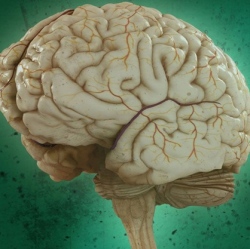
Scientists have generally thought that babies are born with more tissue than their brains need, and that the body slowly dumps some of it as the brain develops. However, a new study shows that at least one part of the brain, the part that recognises faces, appears to develop in the opposite direction, increasing in complexity into adulthood.
In research published today in the journal Science, an international team of neuroscientists sought to understand the complex process of brain development. To do so, they analysed the brains of a group of kids and adults with advanced MRI techniques, delivering face and place recognition tests to their subjects. The results showed more structural complexity in certain parts of the brain in the adults than in children, matching improvements in the subjects’ ability to recognise faces, something that surprised even the study’s authors.
“When I learned about the brain, we were told we were born with more than they need at birth and the tissue gets pruned away,” said Jesse Gomez, a Stanford PhD student in neuroscience and the study’s first author. “It was really surprising to see that what’s left is growing and impacts the brain’s function.”
The experiments included 22 children between the ages of 5 and 12, and 25 adults between the ages of 22 and 28. After training the fidgety children to sit still in a mock brain scanner, the researchers performed a functional MRI and quantitative MRI scan on each subject and delivered a series of tests to measure how good the subjects were at completing various perceptual tasks.
The functional MRI produced images showing which areas of the brain lit up when subjects performed specific tasks, while the quantitative MRI provided numerical measurements of brain tissue properties, allowing the researchers to compare values between subjects, said Gomez. They validated the measurements of the adults’ brain activities with scans of the microscopic structure of adult post-mortem brain tissue.
The scientists found that the older subjects had more complexity in their brains’ supporting structure, in a part of the brain called the fusiform gyrus. This occurred specifically the region that recognizes faces, and not in the nearby region that recognizes places. The adults didn’t have more neurons or bigger regions—rather, Gomez compared the results to a fixed-size garden plot with more flowers, roots and branches in the adult group.
